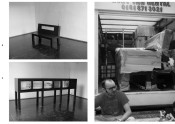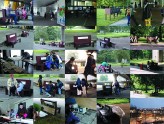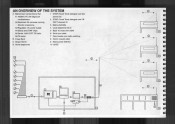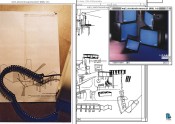"The big problem with information technology is that it tries so hard to be rational. By contrast, humans are happy to be rational only part of the time. Most other times (apart from the fact that they sleep so much) people operate in very different modes: of daydreaming and pondering; of joy and melancholy; of hope and of despair – apart from all the other subliminal states of which, most of the time, we are not even aware. Now, all of these I would call the non-rational [...] Because all information technology systems have started out in life with a big ration of the rational, the logical conclusion seems to be that, indeed, we should work towards a new and perfect world – a technocracy directed by the empty ethos of machines. Projects under the i3 [Intelligent Information Interfaces] research initiative – and in particular Presence – rejected this purely positivistic absurdity, that along with the development of the computer, has been furiously promulgated over the last 50 years. However, rather than taking a 'neo-Luddite' stance, i3 aspired to start from human-centred notions to see how new technology could be invented and interwoven in that context. It asked for ways of supporting (and not replacing) everyday people doing everyday things: of supporting creativity and imagination, of friendship and community, having a chat, of ..." - Jakub Wejchert, Future and Emerging Technologies Unit, European Commission.
Background
The primary goal of the Presence project was to develop new ways for ordinary people – and especially older people – to interact with computers and communications. For older people, technology is often a means – not an end in itself. It is a means, in particular, to better communications, which can reduce their dependency on welfare services. This is the thinking behind Presence. The project connected a wide range of organisations and was based on three test sites that have the common objective of supporting the activities and well-being of older people belonging to local communities. The sites provided a complementary range of experiences, encompassing three difference countries (Italy, Norway, and the Netherlands); a range of technologies, from low- to high- tech, to cutting edge; and three basic domains: assistance, communications, and accessing mobility.
This multi-party research project developed interfaces and scenarios about communications infrastructure. The interfaces which were developed during the project were designed to have the following qualities: be pleasureable devices, considering the aesthetics of the interaction as a major element to be developed in tandem with functionality; incorporate multi-modal devices to allow parallel channels for use by people of different abilities; incorporate input and output devices "hidden" in the environment of public spaces or the home. An important outcome of the project were new methodologies for the design of information technology products and services for older people, and for social actors with different needs in everyday life.
What We Did
The processes of this research project ranged from design-led user studies ('Cultural Probes') which probed older people’s lives and attitudes, to conceptual proposals for innovative services and systems, to design experiments and tests of working prototypes in the communities themselves.
The very different characters of the three sites struck us immediately during the brief visits we made at the beginning of the project. Their physical settings, cultures, and the personalities of the older people combined to give each place its own identity, impossible to confuse with the others. Given this, pursuing generic designs that would be relevant for all three sites seemed inconceivable to us, as they would inevitably undervalue the particular situation in any one. Instead, it seemed clear that our designs should respond to each community separately. It was obvious, however, that short visits would not allow us to understand the different communities in depth. We had neither time nor budget to make longer stays, and traditional methods, such as questionnaire studies or focus groups, seemed too impersonal to give us the empathic understanding we required. The Cultural Probes grew out of our feeling that we had to explore new methods in order to approach the sites.










The second main phase of the project involved generating a wide range of proposals for each of the three sites. Using the returned items from the Cultural Probes, as well as photographs, anecdotes, and souvenirs from our visits, we imagined a wide variety of systems that we might develop and recorded our ideas for discussion with our partners and the groups of older people at each of the sites.
We made a structured workbook, using a variety of imagery to create fragmented narratives for the systems we were proposing, while using descriptive text to provide a framework and organisation for the ideas. These workbooks were presented to the older people in each of the three sites during visits, to encourage them to imagine the ideas and to elicit their feedback and ideas.
Discussing the workbook with the older people and our partners allowed us to crystallise the design proposals for each site. What had started as loose constellations of ideas cohered as integrated systems, the result of having been inhabited by our imaginations for so long. We went on to create an interactive multimedia presentation of our design proposals where separate screens described each community to set the context for our proposals, presented animated diagrams of the systems we suggested, and offered a ‘catalogue of parts’ indicating the kinds of physical artefacts that might comprise the systems.
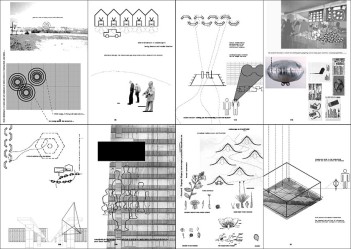
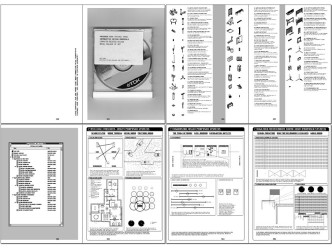
At this stage we tested approximate versions of the systems in the three sites. We were not primarily concerned with technical practicalities at this stage, as we were satisfied that a number of possible routes existed to realise each of the proposals. Instead, we focused on using appropriate, often low-tech, means to simulate and test the experiences the proposals would engender – their aesthetics, their social effects, and their cultural implications – with the older people in the three communities. Nonetheless, in the course of the experiments it became clear that both technical concerns and the intellectual challenge offered by the systems would play a large role in deciding which to take forward.
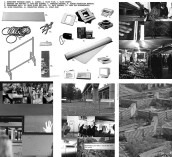
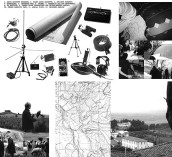
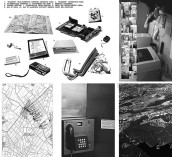
Performing tests of the proposals in Oslo, Peccioli, and the Bijlmer took a surprising amount of time, despite the technological simplicity of the experimental situations we created. Clearly, implementing more technically sophisticated prototypes of all three systems would be impossible. We settled with little difficulty on developing and testing the system we had designed for the Bijlmer in Amsterdam. In part, this was because our experiment had worked best there, with few obvious technical or conceptual problems and an enthusiastic response from the local inhabitants. More than this, however, we were intrigued by the complexity of this area and wanted to explore further the ideas it had inspired.
